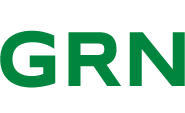The United States is a global leader in the development of next-generation geothermal technologies that can provide clean, 24/7 electricity by unlocking previously inaccessible resources through engineered systems. The Department of Energy (DOE) estimates that next-generation geothermal can economically provide 30-35 gigawatts (GW) of power by 2035, while global technical potential is even greater at an estimated 118 GW.
Commercializing and scaling next-generation geothermal quickly will be crucial to U.S. energy security and innovation leadership. The converging trends of industrial reshoring, AI-driven data infrastructure build-out, and widespread electrification are poised to usher in an era of sustained electricity demand growth in the United States. From 2022 to 2024, the five-year electricity growth forecast of the Federal Energy Regulatory Commission (FERC) increased fivefold. By 2035, total electricity demand could be almost 30 percent higher than 2023 levels.
While substantial and accelerated investment is needed across the power sector, "firm" generation sources that can flexibly dispatch electricity around the clock will be especially critical for reliability and grid balancing. Geothermal is among a handful of technologies that can do so today. As such, U.S. Secretary of Energy Chris Wright has identified geothermal as a priority for efforts to unleash American energy and innovation.
IRA Tax Credits Are Crucial for Scaling Next-Gen Geothermal
Though currently limited in scale, next-generation geothermal is rapidly advancing along the experience curve in the United States. Propelled by high resource potential, a relatively de-risked supply chain, transferable expertise from a robust oil and gas industry, and growing demand for firm power, next-generation geothermal developments in the United States are showing clear signs of accelerated innovation and cost reduction. The FORGE research project in Utah, a public-private collaboration, achieved over 500 percent faster drilling rates between 2017 and 2024. Fervo Energy, one of the nation's leading developers, observed an estimated 35 percent learning rate in drilling costs. This far exceeds the roughly 13 percent learning rate observed in unconventional hydraulic fracturing during the height of the shale gas boom.
As the industry progresses from first-of-a-kind demonstrations to nth-of-a-kind projects, targeted and forward-thinking public support will be critical to sustain momentum. Programs like the DOE's Loan Programs Office can help early commercial deployment, but consistent market signals and strategic de-risking will be key to achieving cost-competitive performance at scale. By addressing high upfront capital costs and project-level uncertainties, the federal government can help convert strong market interest into actual investment.
The investment tax credit (ITC) and production tax credit (PTC), made accessible to geothermal by the Inflation Reduction Act (IRA), are among the most effective tools for improving project economics and reducing investment risk. Namely, these credits provide crucial counterweights to the financial and operational risks facing geothermal projects, which tend to have long asset lives and depreciation schedules. By reducing initial capital expenditures (ITC) or ensuring predictable revenue streams (PTC), these IRA tax credits can crowd in private capital and leverage U.S. innovation leadership to achieve sustained commercial growth.







